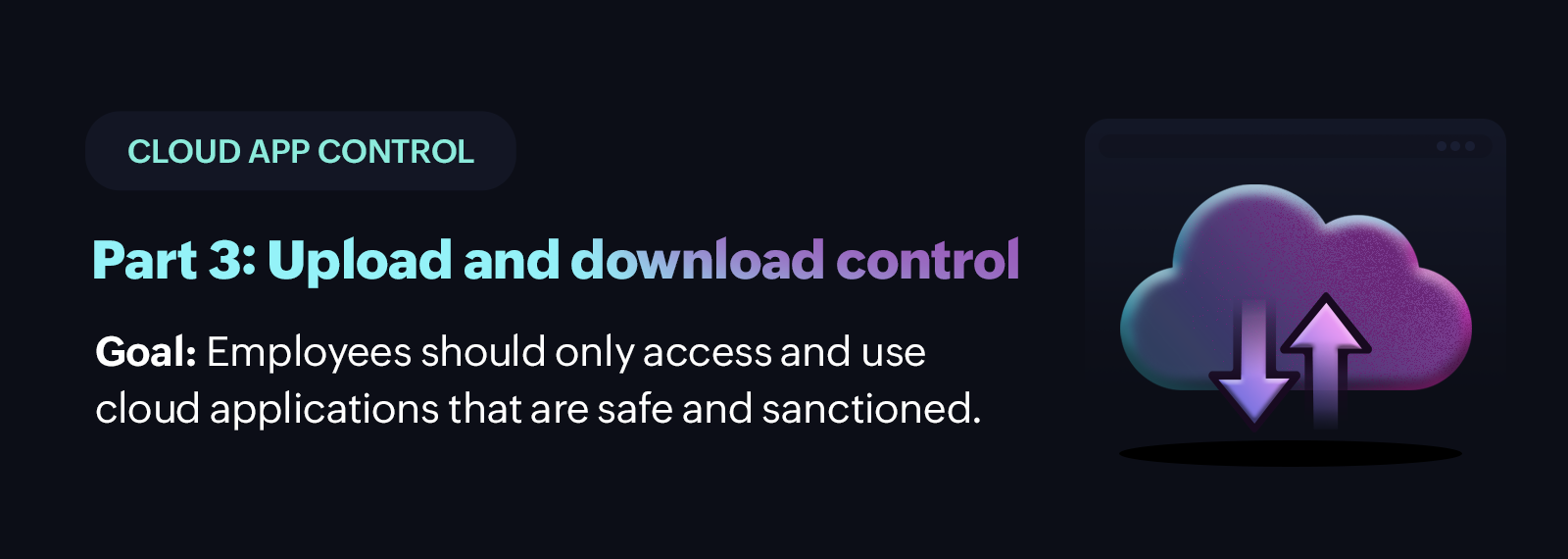Mastering cloud app control, Part 3: Governing file transfers

In Part 1 and Part 2 of the cloud app control blog series, we saw how SinaraTech, a mid-sized ecommerce company, used access control to block risky apps and login control to weed out unauthorized access to legit applications. But the danger wasn't over yet. The Security SOC team had one final piece that was missing from the cloud app control puzzle. Let's continue down the road to find that piece.
Part 1: Access control | |
Part 2: Login control | |
Part 3: Data control | We are here! |
Part 3: File upload and file download control
Even in trusted cloud applications, sensitive data can leave the organization through uploads, downloads, email attachments, and third-party integrations. With access and logins already permitted, the next concern is what users do once they’re inside—especially when data can be easily moved to personal devices, shared externally, or misused. Data control is about keeping track of this movement and ensuring it stays within safe, sanctioned boundaries.
Scenario
SinaraTech has come a long way from broad-stroke blocking. With thoughtful access and login controls in place, the remaining risk was no longer about simply accessing apps. They were about what users did after accessing it. Employees still needed to upload documents, collaborate in real time, or retrieve sensitive files from a variety of third-party applications. For example:
Marketers needed to upload campaign files to Google Drive to collaborate with social media influencers.
The legal team needed to download contracts from SharePoint for review.
Sales teams needed to save pricing proposals from OneDrive before client visits.
Once again, these are legitimate, business-critical needs. But most external threats come from accidentally downloading malicious files, and most internal threats begin with intentionally uploading sensitive files.
The SOC team had to do something.
Strategy
File upload and download control was the third line of defense.
The final piece was found with a set of targeted data controls:
Block file uploads and downloads to risky or unknown cloud apps—such as personal storage drives, shady file-sharing platforms, and phishing domains.
Allow file movement only across trusted platforms like Microsoft 365 and Google Workspace, and only through authorized credentials.
Monitor data movements closely. Track all file uploads and downloads to make sure sensitive files don't leave the perimeter and malware don't enter the network.
Results
After full deployment, the SOC team blocked multiple unauthorized file uploads to external applications and downloads from risky applications. With clearer boundaries, employees became more accountable in how they handled data, and a win-win situation was reached between the employees and the SOC team. Instead of closing doors, they created controlled corridors, finally evolving from gatekeepers to strategic enablers.
Check out how your SOC team can replicate these results in your environment with ManageEngine DataSecurity Plus.
The full picture: Final takeaway
This journey reflects a growing need for modern cloud security. The ability to say yes, but safely. Each part—access, login, and data control—added a new level of granularity and trust.
Access control blocked unauthorized apps at the network edge, preventing users from reaching known risky or unsanctioned cloud services.
Login control enforced identity-aware restrictions, allowing access only when users logged in with corporate accounts.
Data control applied deep content inspection to prevent data exfiltration and risky downloads.
The lesson? Cloud app control isn't just about restriction. It's about alignment—between security, productivity, and context. And in today’s SaaS-driven world, that alignment is what separates rigid IT from resilient operations.